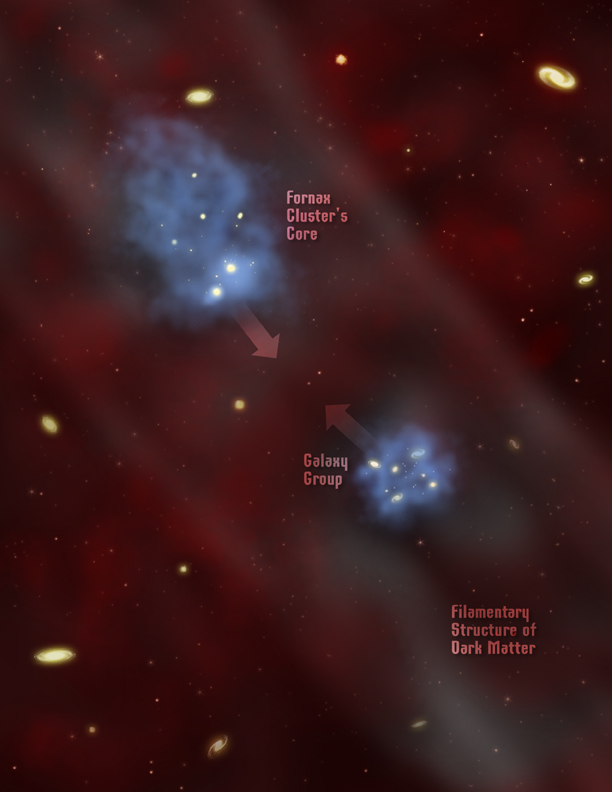|
|
||
 Credit: CXC/M.Weiss |
||
|
pic of the day Links:
Society for
|
Nov 17, 2004 Astronomers hypothesize that 96% of the universe is dark matter and dark energy. The dark matter must be composed of something other than atoms and molecules, and the dark energy must be strong enough to counteract gravity. No one has ever detected either dark matter or dark energy. But if they didn't exist, the big bang theory couldn't work. So loyal astronomical followers believe that the planets and stars and nebulae and galaxies we observe must be only 4% of what's really out there. The rest will be "discovered" eventually. The picture above, based on Chandra x-ray data, is an artist's concept of how dark matter in the Fornax cluster of galaxies is hypothesized to work, explaining away the anomalous motions of galaxies in clusters. When Fritz Zwicky first proposed the concept of dark matter in the 1930's, he wasn't talking about the same dark matter that astronomers believe in today. He was proposing that galaxies and clusters have enough real atoms and molecules in dust clouds, planets, and dim stars to account for the fact that galaxies in clusters appear to be moving so fast that the clusters are flying apart. He called it dark matter because it didn't shine bright enough for us to detect it from so far away. Later astronomers proved there couldn't be enough real matter to make the universe work the way they know it works, so the meaning of the concept dark matter was changed.
Then matter alone wasn't enough to explain away the problems. All that Not all astronomers are willing to accept these convoluted lines of reasoning. A group of cosmologists have joined together to protest the dark side of the universe. Their statement was rejected by NATURE magazine, but later published in the May 22, 2004 issue of NEW SCIENTIST. The signers of the statement disagree among themselves about how the universe works, but they are in agreement about one thing--the big bang doesn't work. Therefore, it shouldn't have a monopoly on the cosmology funding and publication. Astronomy faced a similar dilemma in the early years of the 20th century. The politically powerful groups "knew" that the universe couldn't be big enough for more than one galaxy--the Milky Way. The few dissenters from this point of view were ridiculed and dismissed. But as telescopes became more powerful, evidence disproving the accepted point of view finally prevailed and the universe became much larger.
The evidence disproving the big bang has been pouring in since the late |
|
|
Copyright 2004: thunderbolts.info |
||
